Meet the Red-Eared Slider: A Comprehensive Guide
The red-eared slider, a familiar face to many, is a captivating freshwater turtle renowned for the striking red markings behind its eyes. This adaptable reptile has become a popular pet, but its story extends far beyond aquariums. This guide delves into the fascinating world of the red-eared slider, exploring its natural history, behavior, and its role in both the ecosystem and human culture.
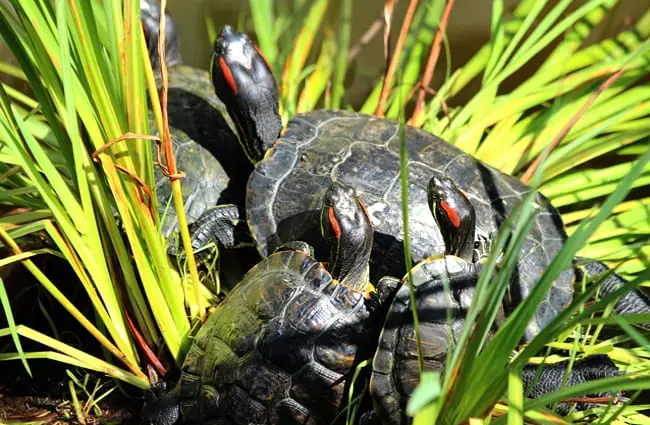
Origins and Evolution
A North American Native
The red-eared slider (Trachemys scripta elegans) originally hails from the southeastern United States, primarily the Mississippi River basin. Its range extends from the Great Plains eastward to the Atlantic coast and southward into Mexico. Fossil records suggest that turtles resembling modern red-eared sliders existed millions of years ago, but the current species evolved relatively recently, adapting to a variety of freshwater habitats.
Adaptation and Diversification
Like all turtles, red-eared sliders belong to the ancient order Testudines. They are members of the pond turtle family (Emydidae), characterized by their relatively flat shells and preference for slow-moving freshwater. Over time, red-eared sliders have diversified to thrive in diverse environments, including ponds, lakes, rivers, and swamps. Their ability to tolerate a range of temperatures and water conditions has contributed to their success.
Habitat and Distribution
Preferred Environments
Red-eared sliders favor bodies of water with soft bottoms and abundant vegetation. These features provide cover from predators, basking sites, and food sources. They are often found in areas with muddy or sandy substrates, where they can burrow to escape harsh weather or predators. Slow-moving or still water is ideal, as strong currents can make it difficult for them to forage.
Global Spread
Unfortunately, the red-eared slider’s adaptability has also led to its introduction and subsequent invasiveness in many parts of the world. Released or escaped pets have established populations in Europe, Asia, South America, and even Africa. While seemingly harmless, these introduced populations can disrupt native ecosystems by competing with local turtle species for resources and introducing diseases.

Diet and Foraging Behavior
Omnivorous Appetite
Red-eared sliders are opportunistic omnivores, meaning they consume a wide variety of foods. Their diet changes with age. Young turtles are primarily carnivorous, feeding on insects, tadpoles, snails, and small fish. As they mature, they incorporate more plant matter into their diet, including algae, aquatic plants, and fruits. They will also scavenge on dead animals when available.
Foraging Techniques
Red-eared sliders are skilled foragers. They often hunt underwater, ambushing prey or actively pursuing it. They can also forage on land, particularly for fruits and vegetation. Their powerful jaws and sharp beaks allow them to efficiently process a variety of food items. They are visual hunters and rely on their keen eyesight to locate prey.
Reproduction and Life Cycle
Mating Rituals
Red-eared sliders typically breed in the spring and early summer. Males attract females through elaborate courtship displays, involving head bobbing, nudging, and gentle biting. These displays serve to demonstrate the male’s fitness and secure a mate. Multiple males may compete for the attention of a single female.
Nesting and Incubation
After mating, the female red-eared slider seeks out a suitable nesting site, typically a sandy or loamy bank near the water. She digs a nest cavity and lays a clutch of two to thirty eggs. The eggs are leathery and oval-shaped. Incubation lasts between sixty and one hundred and twenty days, depending on temperature. The sex of the hatchlings is determined by the temperature during incubation, with warmer temperatures producing more females.
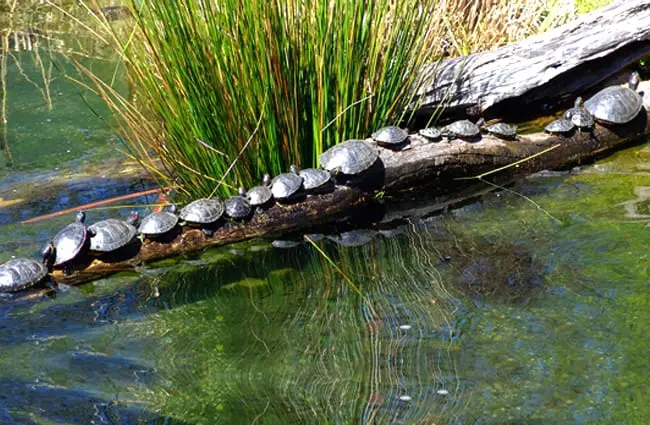
Growth and Maturity
Hatchlings are tiny, measuring only a few inches in length. They grow rapidly, reaching maturity in five to eight years. Red-eared sliders can live for twenty to thirty years in the wild, and even longer in captivity. Their shells continue to grow throughout their lives, although the rate of growth slows with age.
Ecological Role and Interactions
Ecosystem Contribution
Red-eared sliders play an important role in maintaining the health of aquatic ecosystems. As juveniles, they help control insect and snail populations. As adults, they contribute to nutrient cycling through their feeding and waste products. They also serve as a food source for larger predators, such as raccoons, foxes, and alligators.
Interactions with Other Species
Red-eared sliders often bask in the sun alongside other turtle species, creating a communal basking site. They may also compete with other turtles for food and habitat. They can be preyed upon by a variety of predators, particularly when they are young or vulnerable. Their presence can influence the abundance and distribution of other aquatic organisms.
Red-Eared Sliders and Humans
Popular Pets
Red-eared sliders have become one of the most popular turtle species kept as pets. Their relatively small size, docile temperament, and ease of care contribute to their appeal. However, it’s important to recognize that they require a significant commitment in terms of space, equipment, and ongoing care. Responsible pet ownership includes providing a suitable habitat, a balanced diet, and regular veterinary checkups.
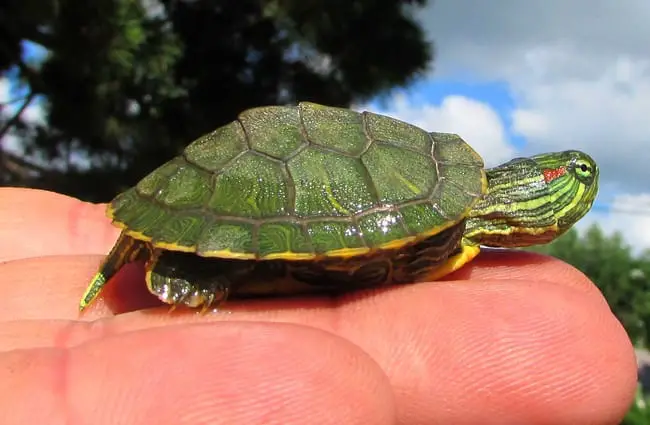
Conservation Concerns
While not currently considered endangered, red-eared slider populations face several threats, including habitat loss, pollution, and invasive species. The illegal trade in turtles can also pose a risk. Responsible pet ownership and conservation efforts are crucial to ensuring the long-term survival of this fascinating reptile.
Encountering a Red-Eared Slider in the Wild
If you encounter a red-eared slider while hiking or exploring near a body of water, observe it from a distance and avoid disturbing it. Do not attempt to handle or feed the turtle. Report any injured or distressed turtles to local wildlife authorities.
Caring for Red-Eared Sliders in Captivity
Providing proper care for a red-eared slider requires a spacious tank with both aquatic and basking areas. A heat lamp and UVB lighting are essential for maintaining the turtle’s health. A varied diet consisting of commercial turtle pellets, insects, and vegetation is recommended. Regular water changes and filter maintenance are crucial for maintaining water quality. Consult with a veterinarian specializing in reptiles for guidance on specific care requirements.
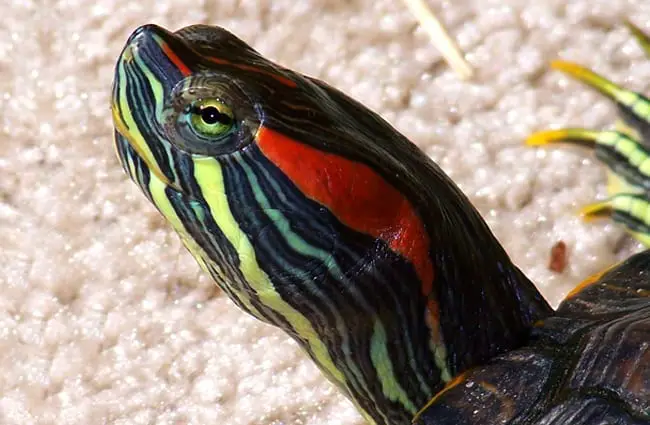
Fascinating Facts
- Red-eared sliders can hold their breath for up to forty-five minutes.
- They use their tongues to stir algae into the water and to locate food.
- Their shells are made of bone covered by scales called scutes.
- They can regulate their body temperature by basking in the sun.
- Female red-eared sliders can store sperm for several years.
The red-eared slider, with its vibrant markings and adaptable nature, continues to captivate and intrigue. From its evolutionary history to its ecological role and interactions with humans, this remarkable reptile offers a wealth of knowledge and appreciation for the natural world.

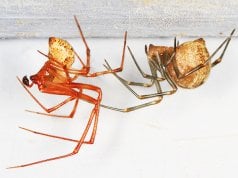
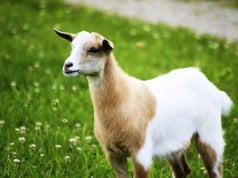
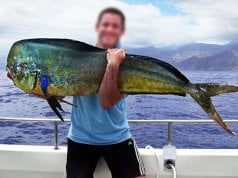

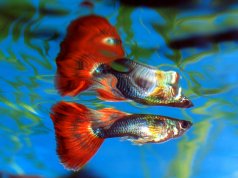
![Red Angus Closeup of a beautiful Red Angus cowPhoto by: U.S. Department of Agriculture [pubic domain]https://creativecommons.org/licenses/by/2.0/](https://animals.net/wp-content/uploads/2020/03/Red-Angus-4-100x75.jpg)

